Authors:
ABSTRACT
Aim
Orthodontic treatment need indexes are indispensable tools for collecting aepidemiological information, to define the need for clinical intervention on a graduated risk scale and to monitor the evolution of clinical conditions over time. The purpose of this research is to evaluate the prevalence of malocclusion and associated risk factors, and to compare the prevalence of malocclusion related to children's growth. Investigating the correlation between malocclusion and dental occlusion development is crucial to define orthodontic timing and the most suitable treatment modalities.
Methods
A cross-sectional, multi-center, observational study was carried out throughout Italy: 4,422 patients aged between 2 and 13 years were visited. The patients were divided into two age groups: one composed of patients aged 2 -7 years, and one of children between 8 and 13 years of age. The prevalence data were classified according to the items of the Baby ROMA (first group, deciduous/early mixed dentition) and ROMA Index (second group, late mixed/permanent dentition). Pearson's Chi-square test was applied for the calculation of statistical significance in the comparison of prevalence data between the two age groups (P <0.05).
Results
The need for orthodontic treatment among Italian children is high. In the sample aged between 2 and 7 years, the most frequent malocclusions are the moderate and severe open bite (23%), moderate and severe Class II (21.2%), deep bite (18.8%), cross bite (16.5%), Class III (7.7%), and crowding (5.1%). In the sample aged between 8 and 13 years the most frequent malocclusions are crowding (50.8 %), Class II (33.1%), deep bite (19.2%) crossbite (18.1%), Class III (9.1%), open bite (6.6%), facial or mandibular asymmetries (3.3%), and functional asymmetries (3.2%). It was found a statistically significant variation of the different malocclusion conditions according to age.
Conclusion
The study confirms that some risk factors occur during growth, and worsen the malocclusion. Therefore, it is important to reduce this risk of worsening by counteracting those factors with an early orthodontic intervention. Some malocclusions are less affected by environmental risk factors. In these case it would be better defer treatment until adolescence.
PLUMX METRICS
Publication date:
Keywords:
Issue:
Vol.21 – n.3/2020
Page:
Publisher:
Cite:
Harvard: M. M. Grippaudo, V. Quinzi, A. Manai, E. G. Paolantonio, F. Valente, G. La Torre, G. Marzo (2020) "Orthodontic treatment need and timing: Assessment of evolutive malocclusion conditions and associated risk factors", European Journal of Paediatric Dentistry, 21(3), pp203-208. doi: 10.23804/ejpd.2020.21.03.09
Copyright (c) 2021 Ariesdue

This work is licensed under a Creative Commons Attribution-NonCommercial 4.0 International License.

